Puerto Rico Se Levanta
Striving for Hope After Hurricane Maria.
Puerto Ricans have Maria fatigue.
On September 20, 2017, the hurricane made landfall on southeast Puerto Rico. The vast size of the Category 4 storm engulfed the entire island, and with torrential rains and sustained winds of 155 miles per hour, Maria left extreme flooding and destruction in her wake. Residents went numerous weeks without power, communication, and regular access to food and drinkable water. And overall, they handled all of this with an incredible amount of dignity and restraint.
The U.S. media coverage of Maria’s destruction was exhaustive. During the weeks following the storm, it appeared Puerto Rico was in ruins; that the road to recovery would be a matter of years, not weeks or months—that the island I once called home would never be the same. But after the New Year, I began seeing images on social media of a Puerto Rico I once knew. Abundant sunshine, brightly painted facades of colonial-era buildings, restaurants and bars open for service—there seemed to be a resurgence, at least in the capital. Was there a disconnect occurring between the reality on some parts of the island and what was being reported? Were voices becoming buried now that headlines had moved on? Despite still coping with slow recovery efforts, areas of no electricity, and stagnant economic growth, it seems American citizens are ready to move forward. I wanted to see for myself how Puerto Rico had shifted post-Maria.
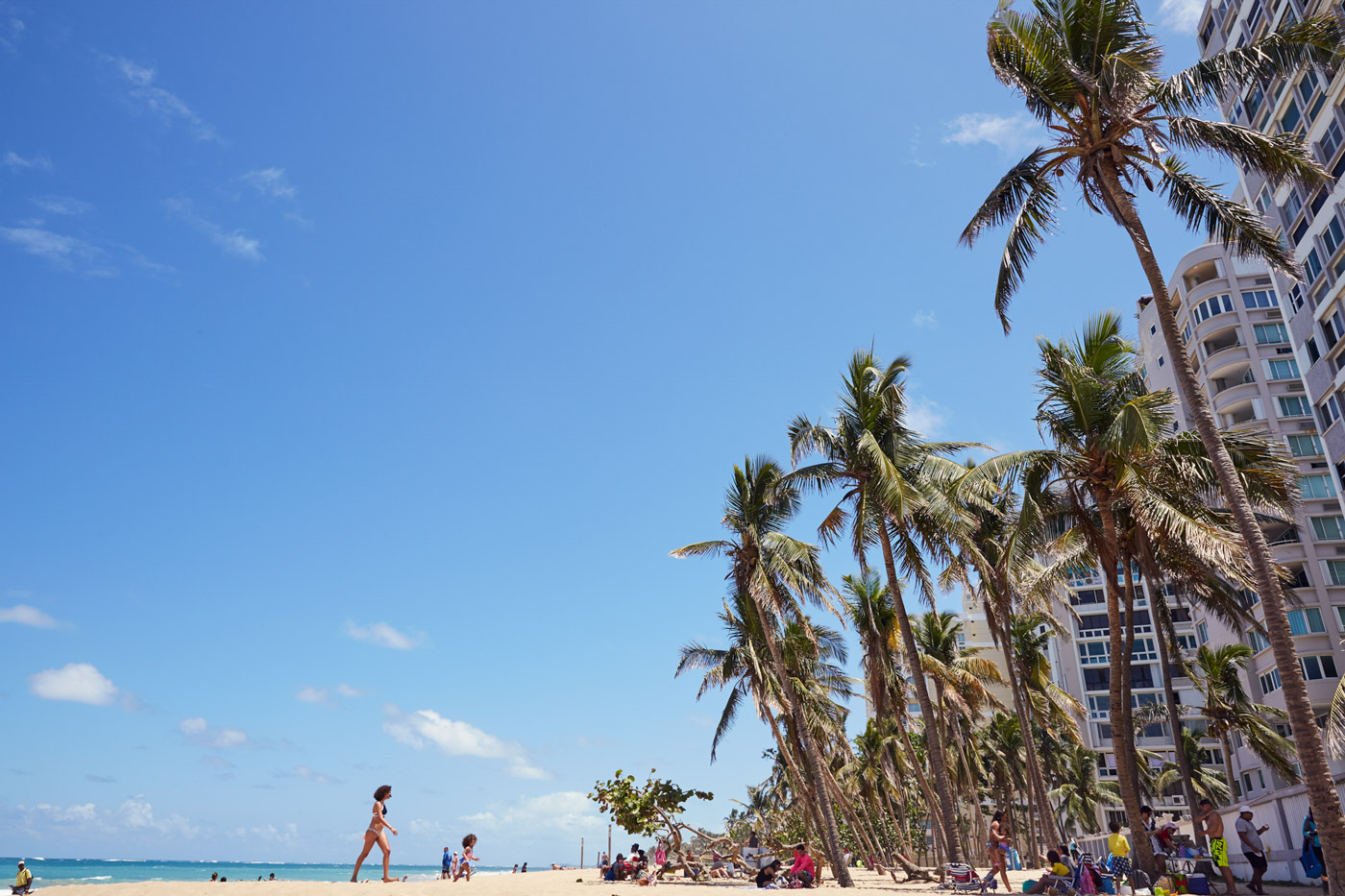
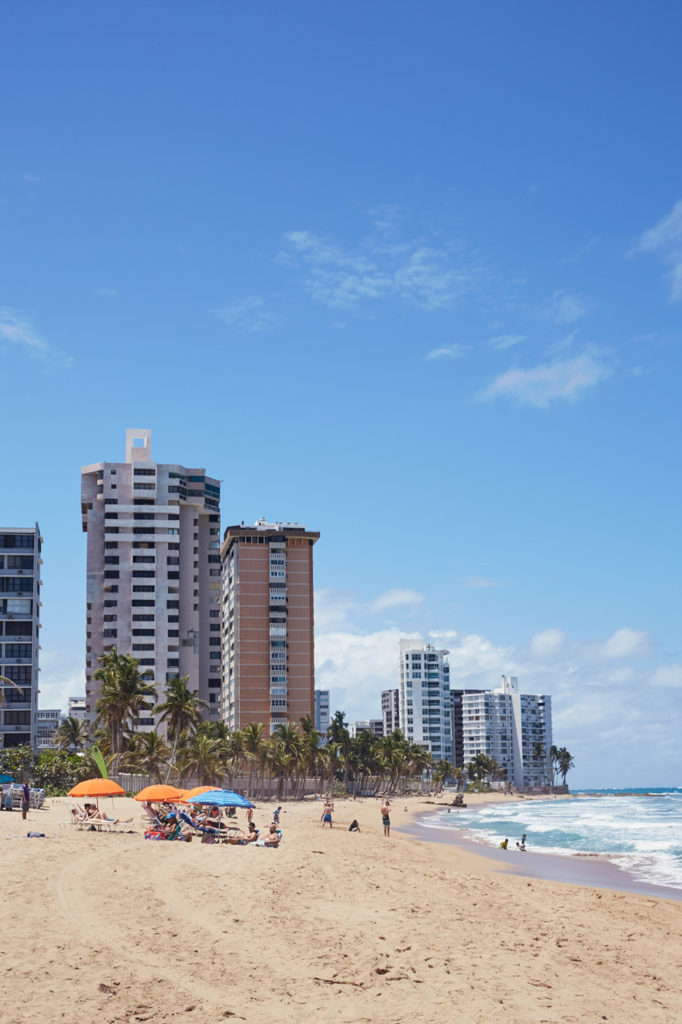
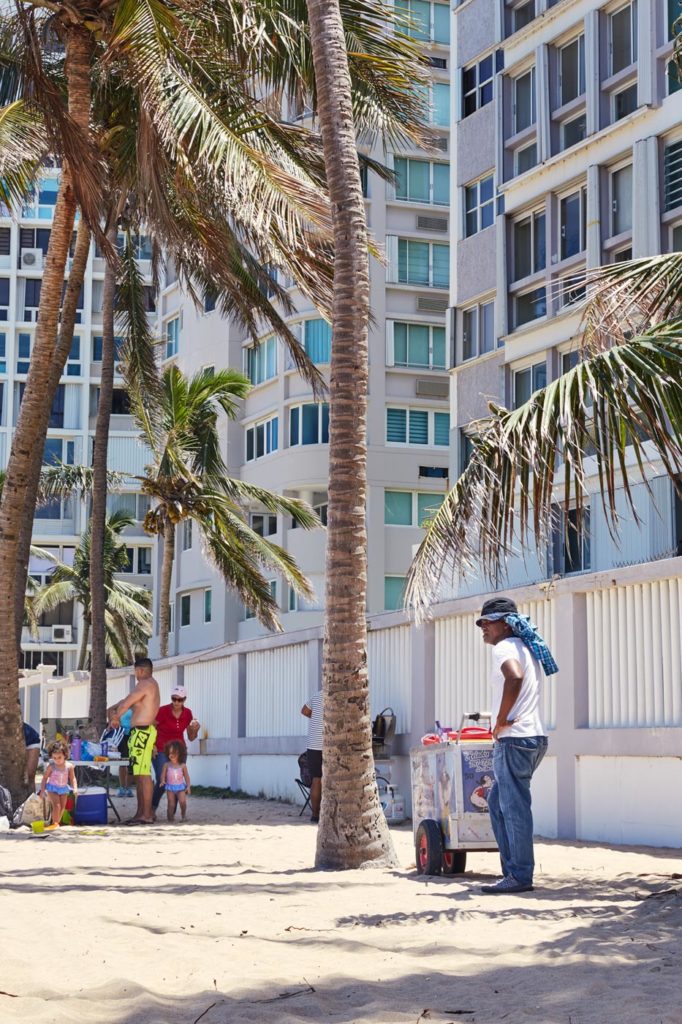
The Welcome Sign of Relief
I arrive in San Juan six months after Maria, and the city is buzzing with activity. Beaches are dotted with kids and coolers. At first glance, the mood is as sunny as the forecast. Tourists disembark daily from cruise ships, adding an ebb and flow to the historic streets of Old San Juan. Most businesses in this tourist hub of the Caribbean have been open since December. It appears things are back up to speed in the capital of Puerto Rico.
Yet there are still glaring signs of Maria’s visit. Blue tarps cover damaged rooftops. Closed signs hang in the windows of shuttered businesses. Hotels, some open to guests and others closed for repair, stand side by side. There are two versions of this story occuring in the same space.
To hear from Puerto Ricans, and those committed to helping the island rebound, I begin in the kitchen of a humble church in Bayamón, where six thousand meals are being prepped. Volunteers assemble rows of sandwiches as a group of women shell beans, engaging in friendly chatter and occasionally breaking out in song. In the kitchen, a band of local chefs cut meat and vegetables intended for the paella pans outside.
This is the main post of World Central Kitchen on the island, an organization founded by Chef José Andrés after the 2010 earthquake in Haiti. Andrés and his team arrived just days after Hurricane Maria hit the island. At the helm of this operation is citizen activist, Erin Schrode.
“When we started, we were feeding the most vulnerable populations: those lacking water, lacking power,” explains Schrode, COO of World Central Kitchen. “We had eighteen kitchens open simultaneously. At our peak, we made 148 thousand meals in one day, and for two weeks we made over 120 thousand meals every day.” For the “chef-driven emergency response”—as it is referred to by Schrode—the staggering numbers required serious manpower, both for preparing meals and for delivery. “We had a whole team just in charge of dispatch, ensuring these meals reached the people who needed them most,” she says.
Social media played an important role in reaching citizens. Andrés created the hashtag #ChefsForPuertoRico as a way for residents to request food via online networks. “We heard from a lot of municipalities, including NGO partners, Save The Children, Mercy Corps, the Red Cross—all were coming and picking up food,” Schrode says. “We had the Coast Guard and Homeland Security taking food out on their missions across the island.” Soon, volunteers and church groups arrived at World Central Kitchen to offer their assistance.
The Herculean effort of feeding an entire island requires precision. Schrode keeps a close tab on the thousands of meals leaving each kitchen to make sure they’re reaching the areas with the most need. “We opened twenty-five kitchens to cover the whole perimeter and center of the island—in Barranquita, Adjunta, Vieques, Humacao, Guaynabo,” Schrode rattles off. “They were smaller, serving between one thousand to ten thousand meals a day. But from our main kitchen, which has always been in the greater San Juan region, people can come, take food and deliver it to the municipalities that need it.”
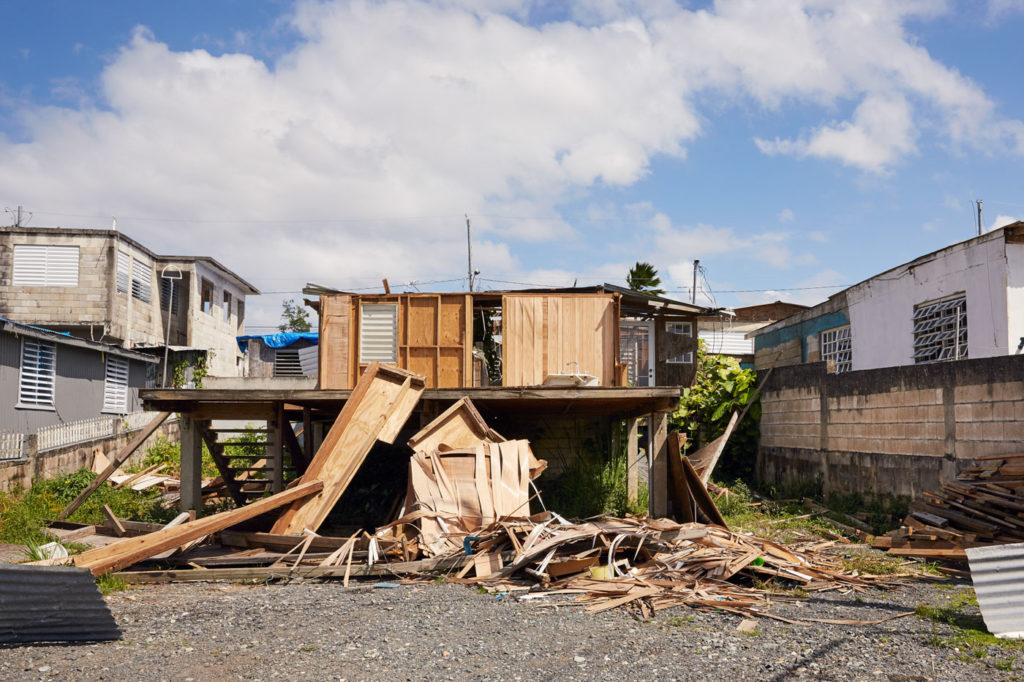
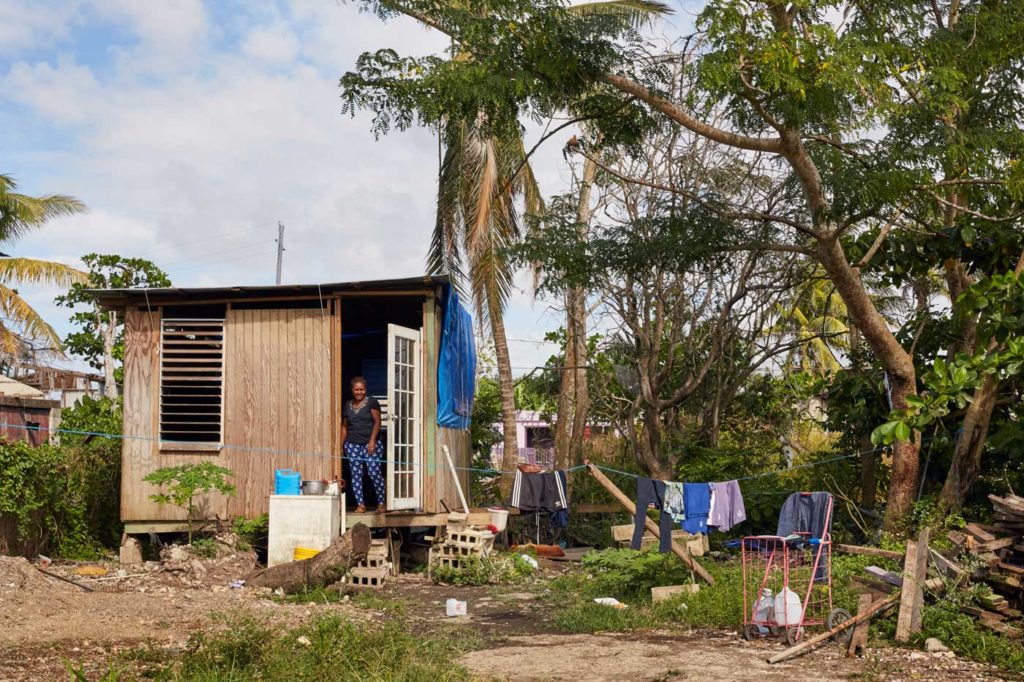
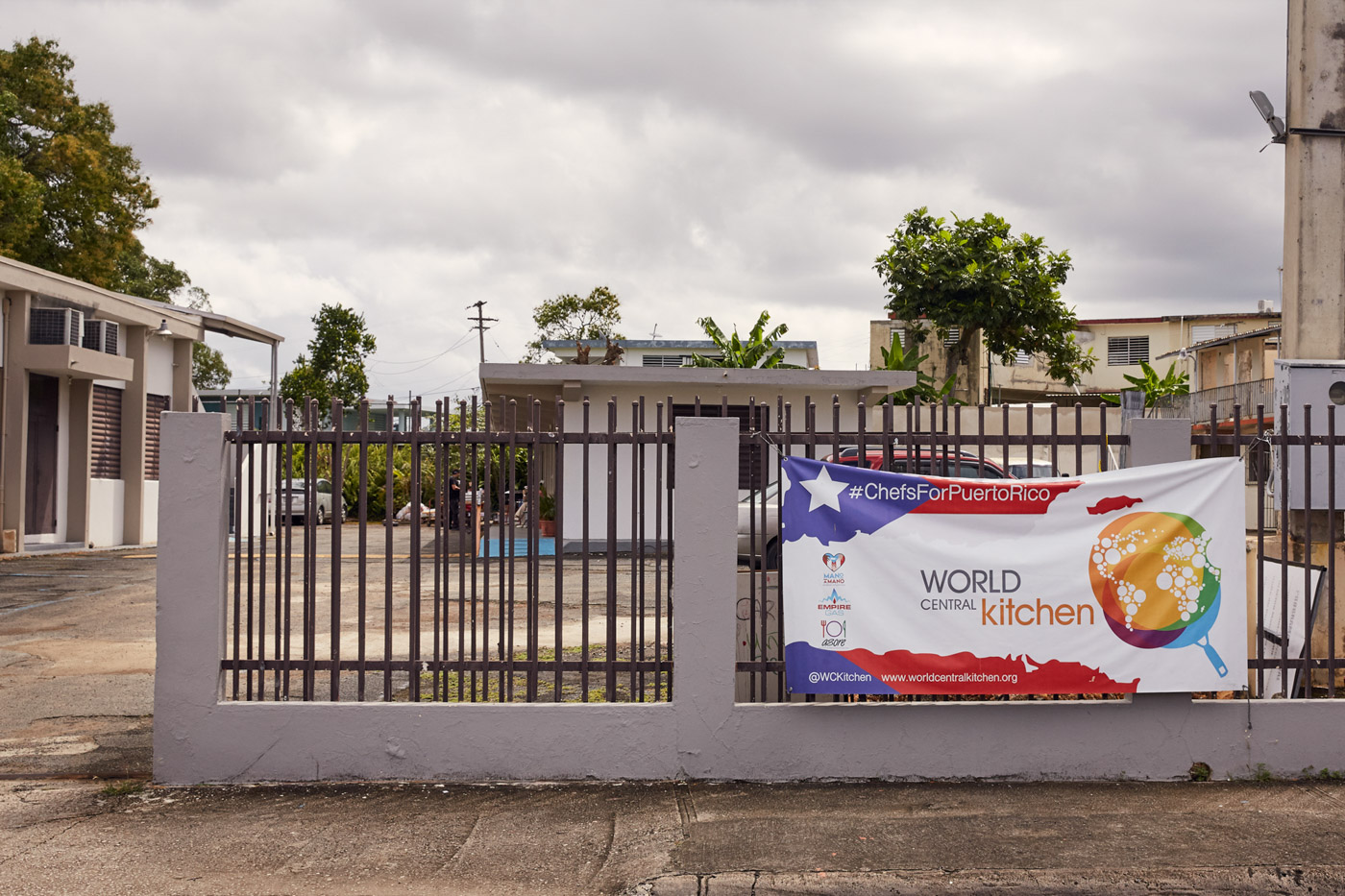
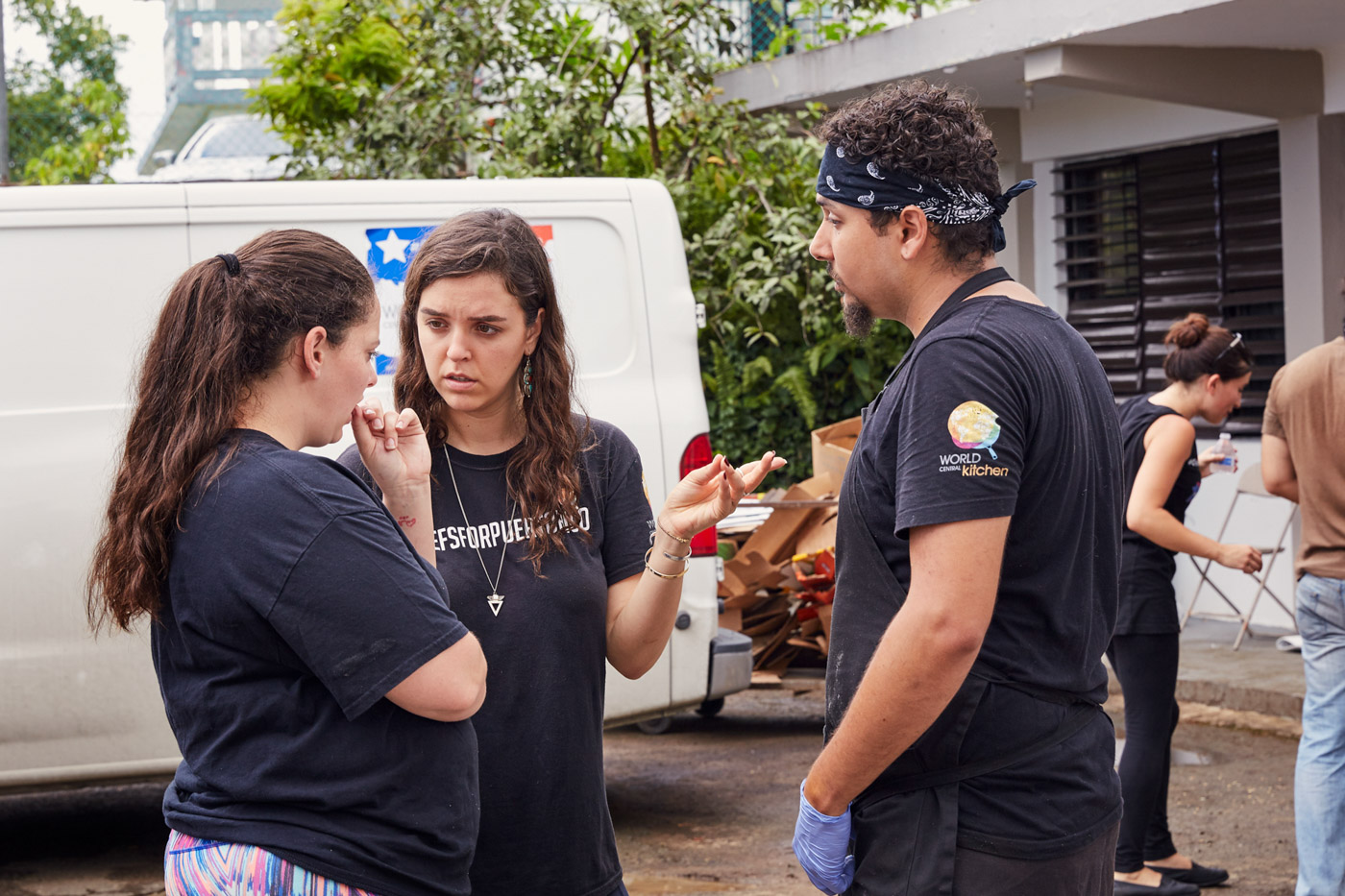
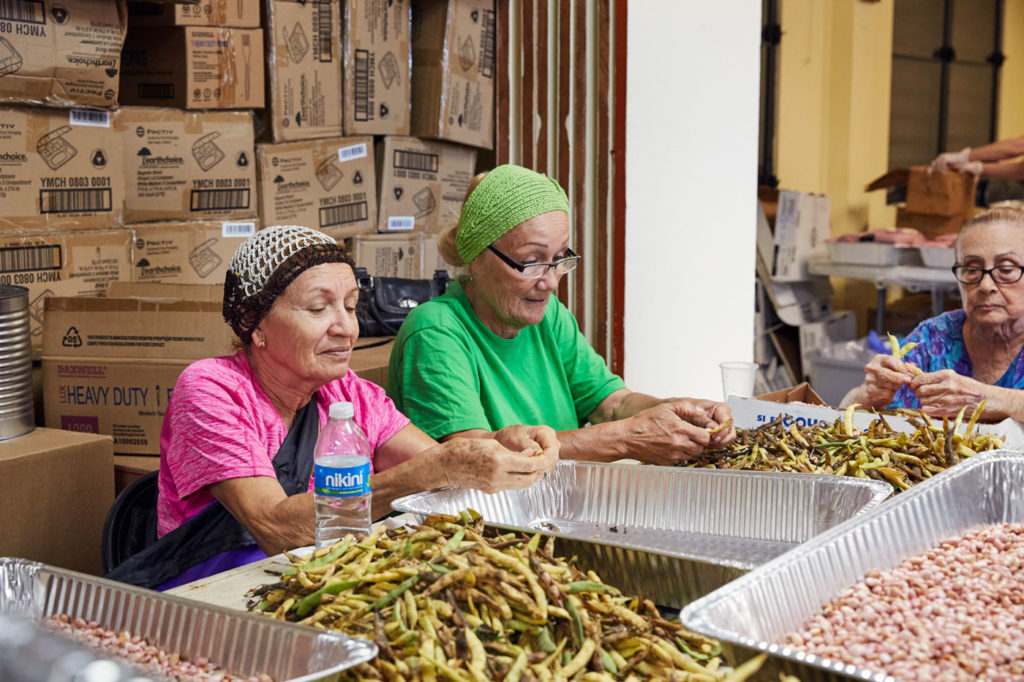
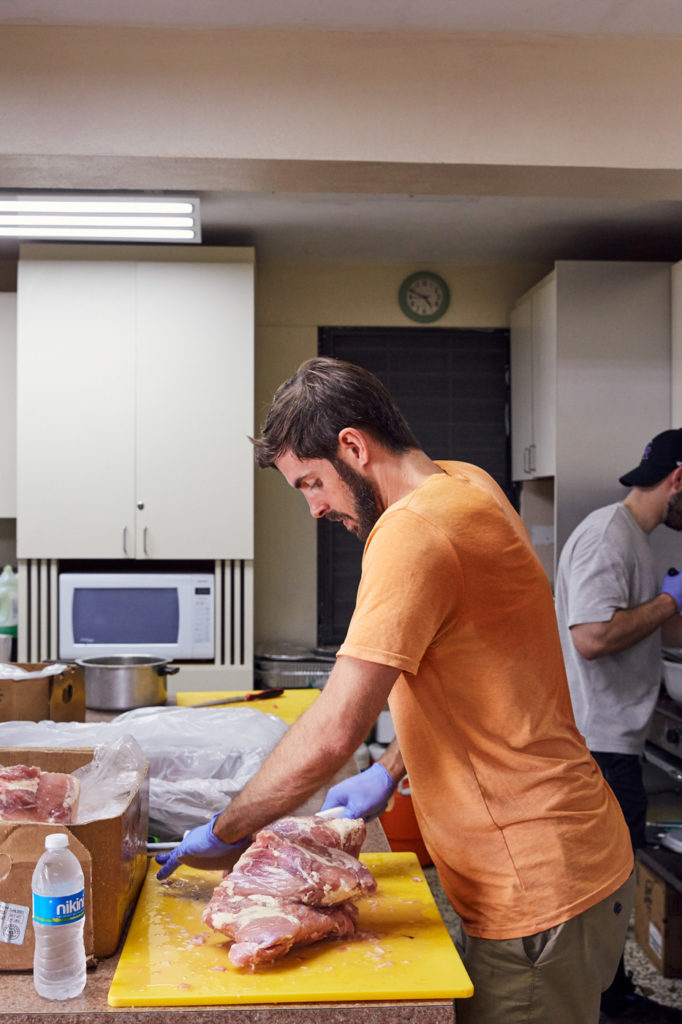
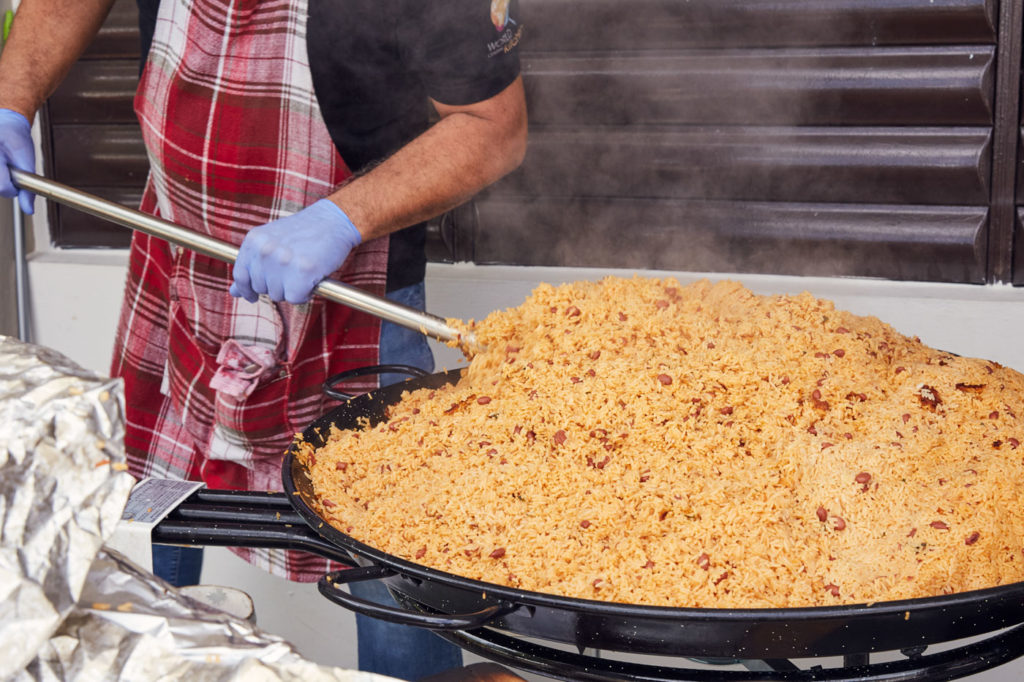
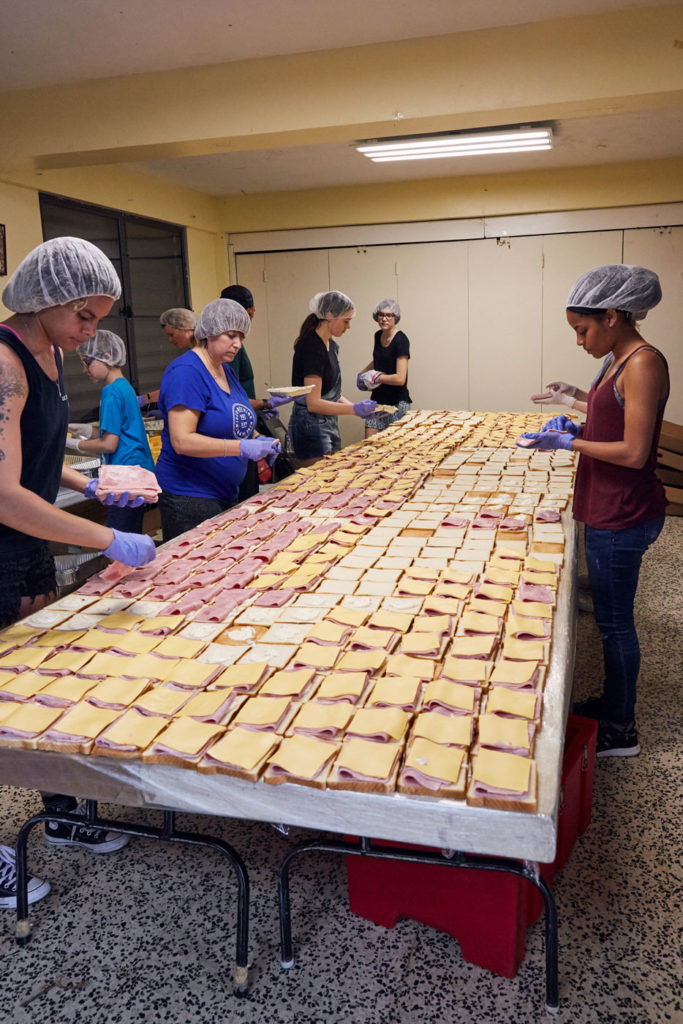
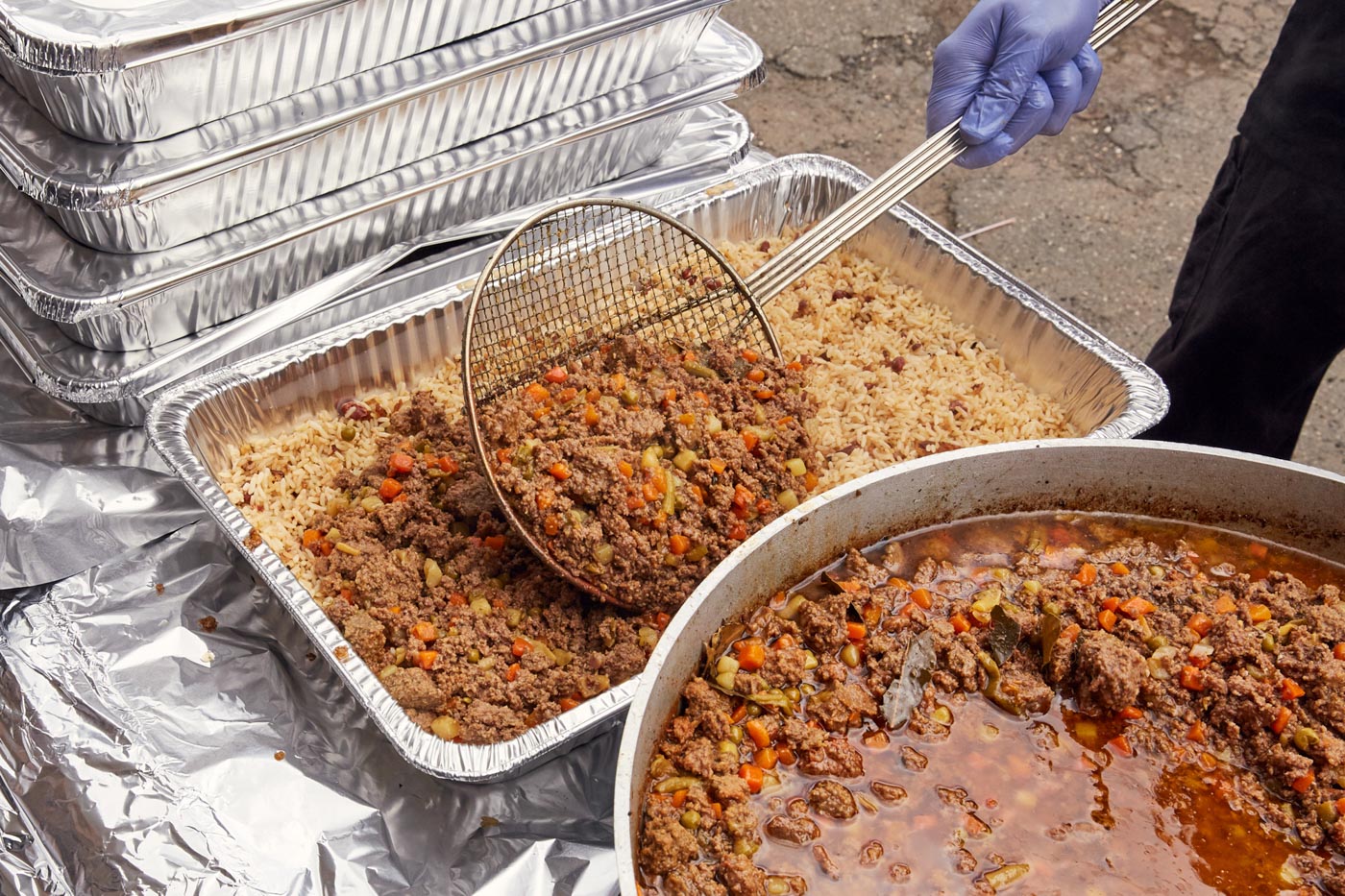
Tourism Takes a Hit
Local businesses dealt with recovery on a much smaller scale, utilizing resources they already had. In the food and beverage sector, many enlisted the help of their teams. Chef Peter Schintler, an Iowa native and owner of Marmalade Restaurant & Wine Bar—a fine-dining anchor in Old San Juan for the past fourteen years—had the support of his staff. “They were an active part of the recovery, from the second day on,” he says. “They were committed to the cause despite their own personal struggles.” Many had families and neighbors to tend to, as well as severe damage to homes and vehicles. These issues were further complicated by downed power and communication lines.
Schintler notes the complex challenges that face business owners. Rain water from the storm poured into the restaurant from overhead ducts, causing severe damage to the interior. Schintler had to replace everything from kitchen equipment and electronics to floors and fabrics. “I knew if we didn’t get open quickly, we wouldn’t get open, period,” he says. “I felt that from the beginning. There was no opportunity to wait six months.”
Native Puerto Rican, Chef Gabriel Hernandez of Verde Mesa also felt the damaging effects of two consecutive hurricanes. “First Irma came, and even that was a big hit,” he says. “We were in the low season, so that was hard. You have your reserves, but reserves are there to sustain your business and cash flow at a certain level. But with a hurricane like Irma, you’re out of business for a week.” Hernandez refers to his sous chef and remaining team as “angels” for sticking with him post-hurricane. After Irma, the restaurant lost power, resulting in a loss of produce. But following Maria, Hernandez lost his team. “They decided to move on. We were closed for a month and a half.” Even after re-opening Verde Mesa, Hernandez can only offer lunch service until conditions improve.
Leslie Cofresi, co-owner of the popular Old San Juan bar complex, La Factoría, feels the industry came to a halt. “When you came from the States, San Juan was the place where you went to have amazing dinners, and go to amazing restaurants and bars. The service industry was at its peak,” he says. “That was wrecked by the hurricane.” A lot of the bartenders, servers and chefs fled the island for work on the U.S. mainland. “We had spirits companies and brands flying people out of Puerto Rico, which was one way they were trying to help, but it wasn’t well thought out,” Cofresi says. “You’re depleting the industry. We were on our way to competing with the big cities in South America. With this hurricane, are we going to be this lost generation that could have been but never was?”
Puerto Rico’s agriculture sector felt the full brunt of the storm. Mass devastation had been reported across the island for crops ranging from plantains to papaya. For coffee growers Kurt Legner and Eva Lisa Santiago, owners of Hacienda Pomarossa—an agro and ecotourism lodging destination in Ponce—Hurricane Maria destroyed nearly eighty percent of their crop. “We had seven thousand trees and we were left with only 1,500 trees,” says Legner. Since Maria, the husband-and-wife team has planted 1,500 new trees, but it will take three years for the trees to begin producing. Santiago says, “It’s going to be a slow process.”
Food and beverage businesses in Puerto Rico rely on tourism, especially during the winter high-season, to get them through the year. “We’re open for business. We need people to come down here,” Cofresi says. “In San Juan, gastronomy is a very important part of tourism.” The travel and tourism industry’s total contribution to Puerto Rico’s GDP in 2017 was 7.2 percent—close to 7.2 billion dollars—and was responsible for nineteen thousand jobs. It allows for local residents to keep working and in turn, to keep spending at home—a cycle that benefits the local economy.
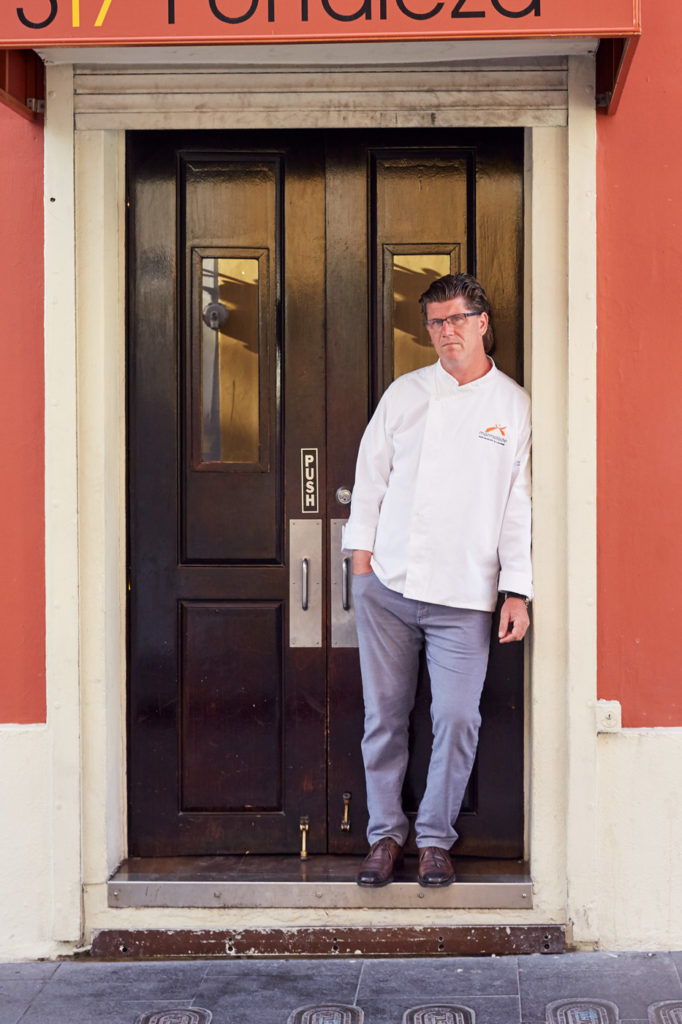
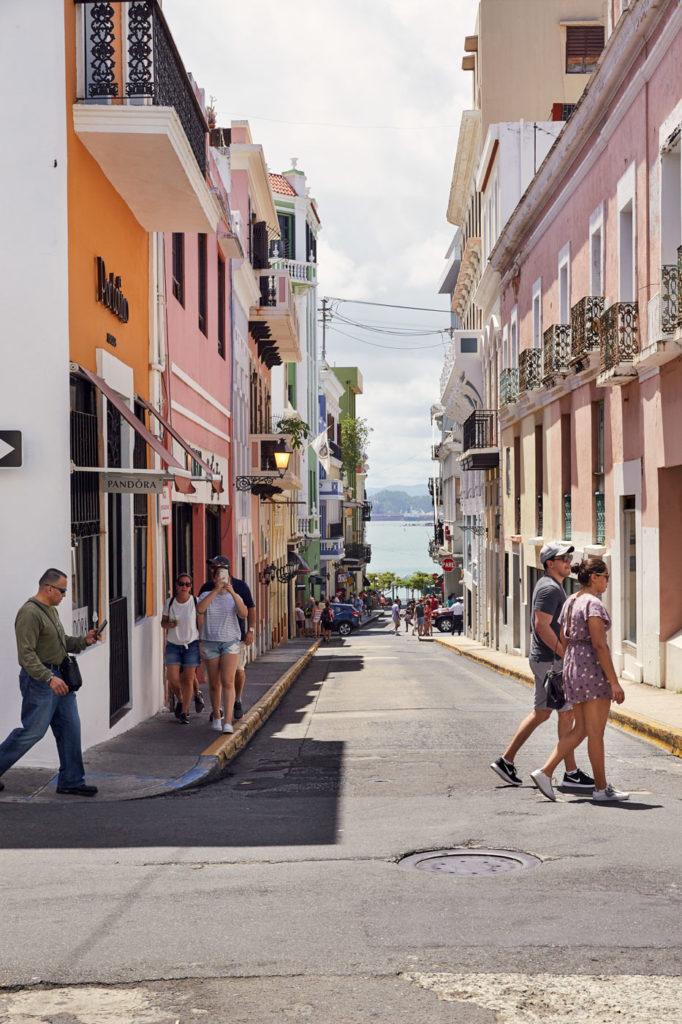
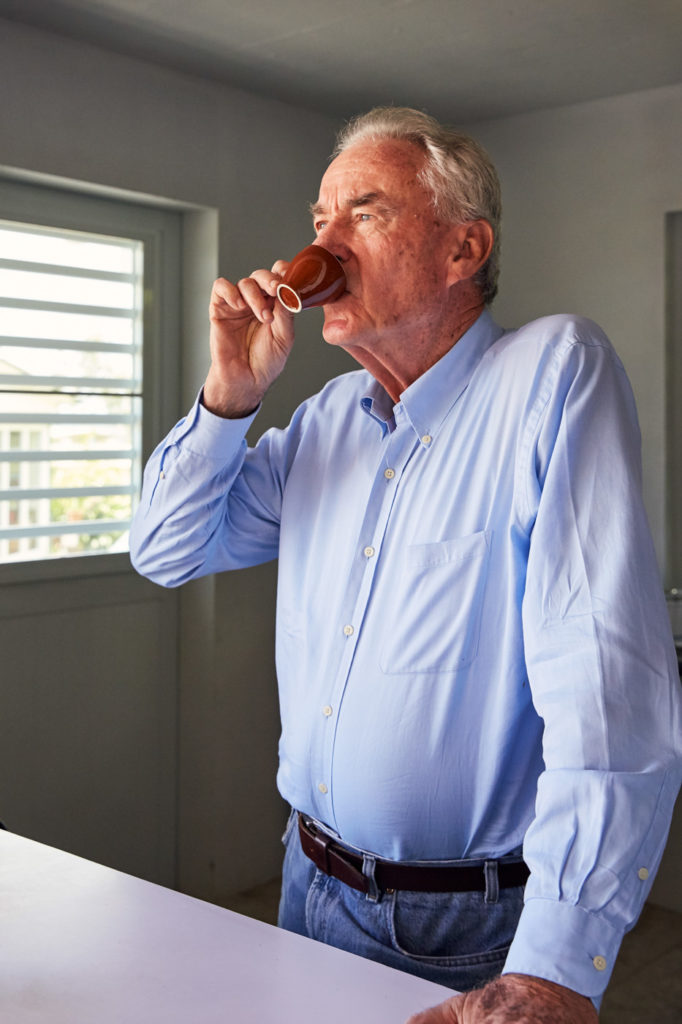
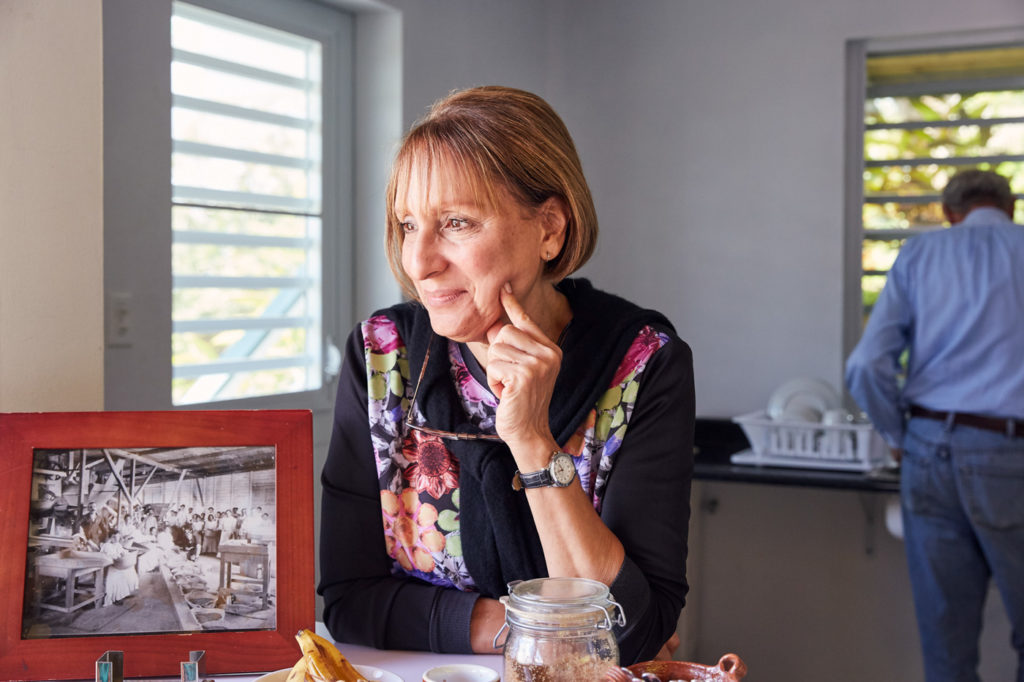
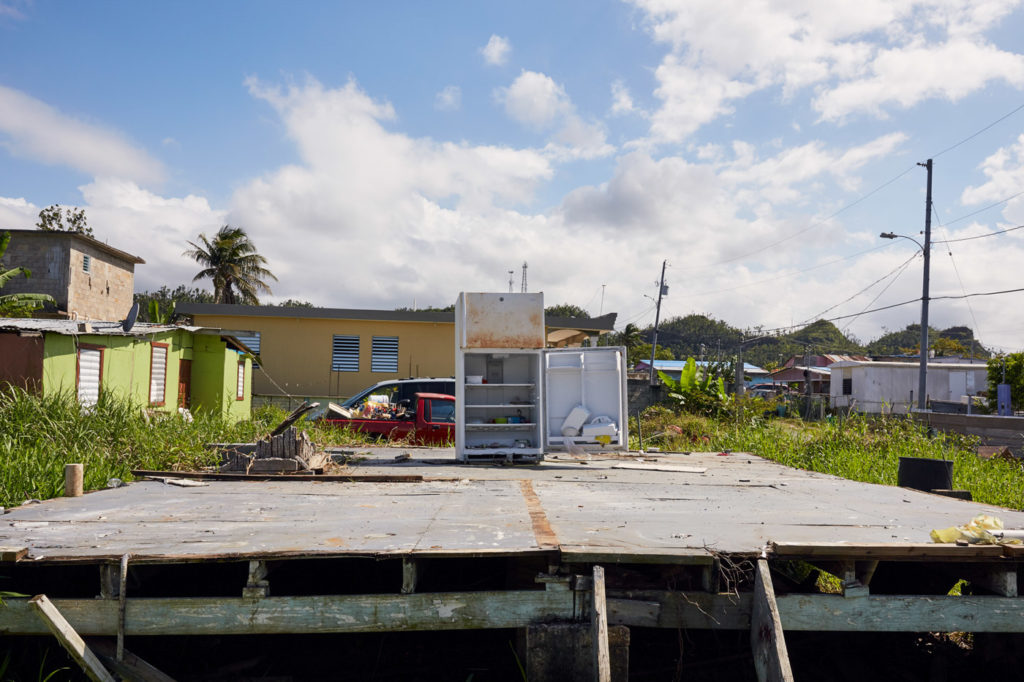
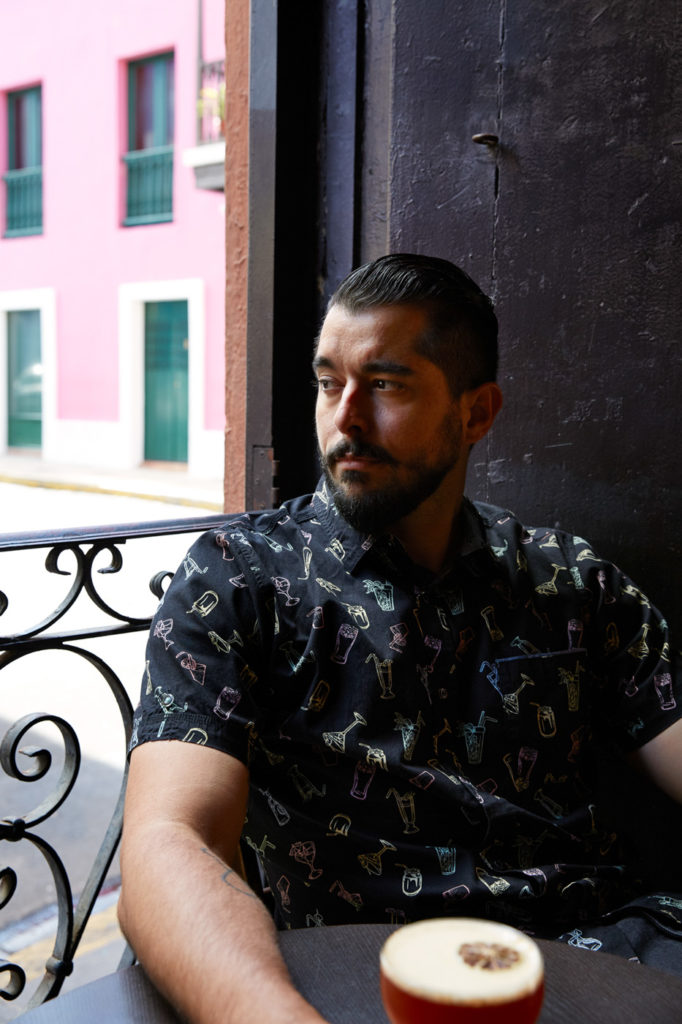
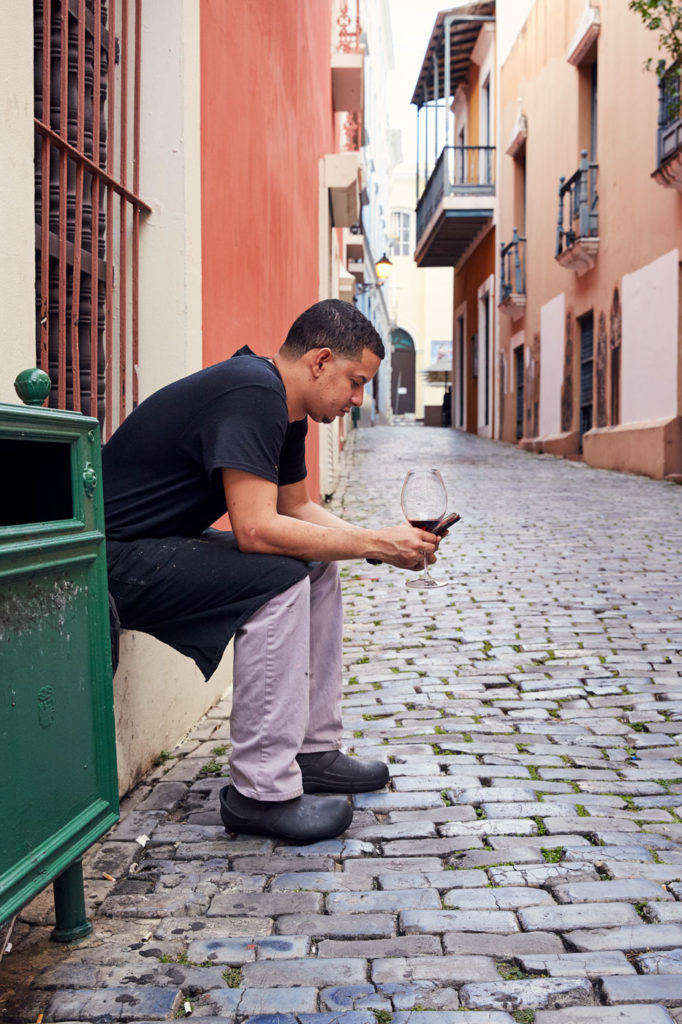
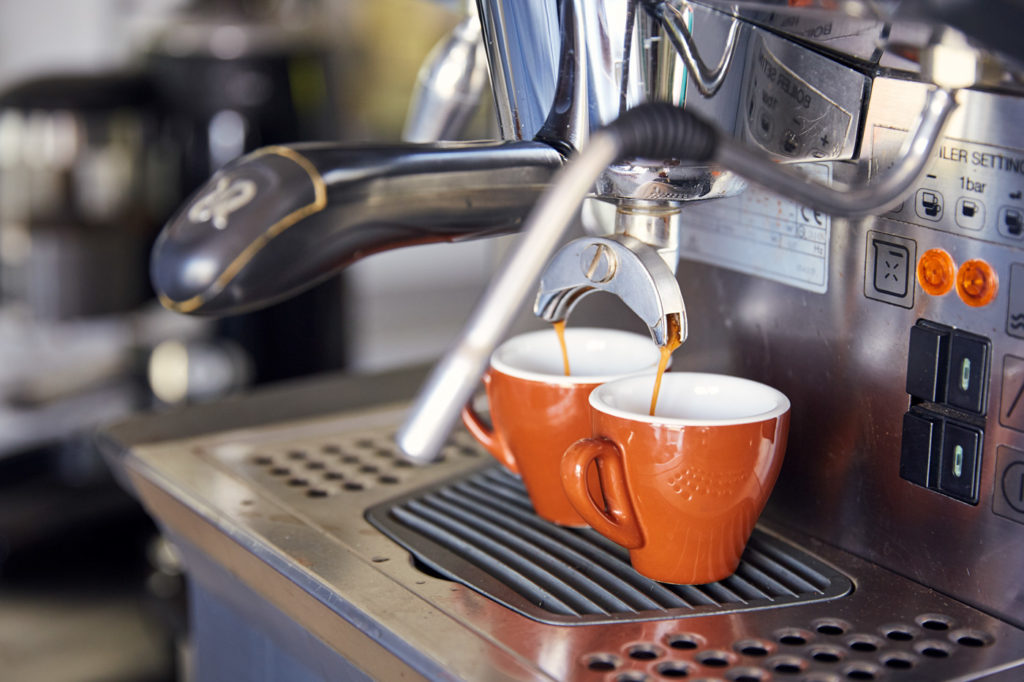
The Role of the Media
The perspective of what was happening on the ground in Puerto Rico was dependent largely on where news was being sourced. Videos of Americans questioning the U.S. funding of Puerto Rican relief, incorrectly arguing that the population isn’t even U.S. citizens, circulated on social media. To counterbalance, sympathetic coverage focused primarily on the devastation, generally glossing over stories of San Juan rebounding—even in the smallest ways.
“You have these two polarizing interpretations of the same event with people in the middle getting nothing,” says Schintler of Marmalade. “It’s taken so much time and energy to get people back in the goodwill of coming to Puerto Rico. Everybody thinks it’s all death and destruction everywhere, and there’s no water or places to stay. It’s rubbish. We’ve been ready to go to business since Thanksgiving.”
Perhaps this bias in the media is attributed to society’s attraction to calamitous news. “After the hurricane, we had a lot of people contacting us from a lot of different sources in the States,” says Cofresi. “They wanted to know about how we’re struggling. We were struggling; we were scared shitless. We thought we were going to lose everything. But that’s not what we want to talk about.”
Despite the winter high-season—and the consecutive nor’easters hammering states from Maine to North Carolina—the number of travelers escaping to Puerto Rico’s warm weather in early 2018 were comparatively low to the previous year according to local business owners, who sense many travelers were uncertain about conditions and unwilling to take the risk. “I think tourists didn’t come to Puerto Rico because of the bad press Puerto Rico has gotten,” says Santiago of Hacienda Pomarossa. Legner adds, “More images of recovery need to be in the press. We need tourists. Things on the island are still not perfect, but they’re getting better.”
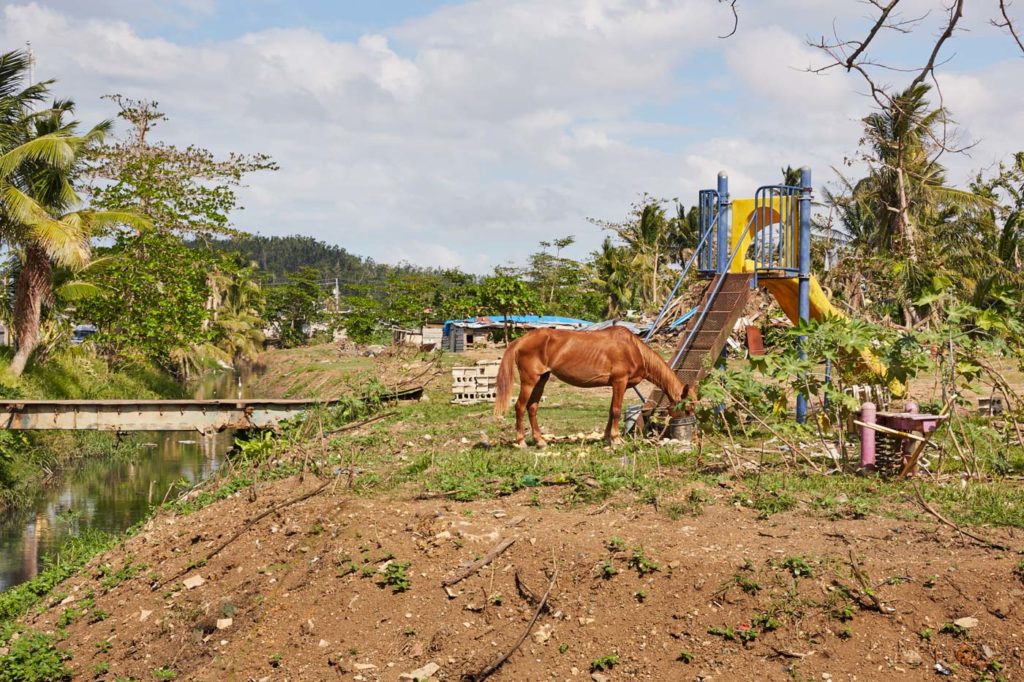
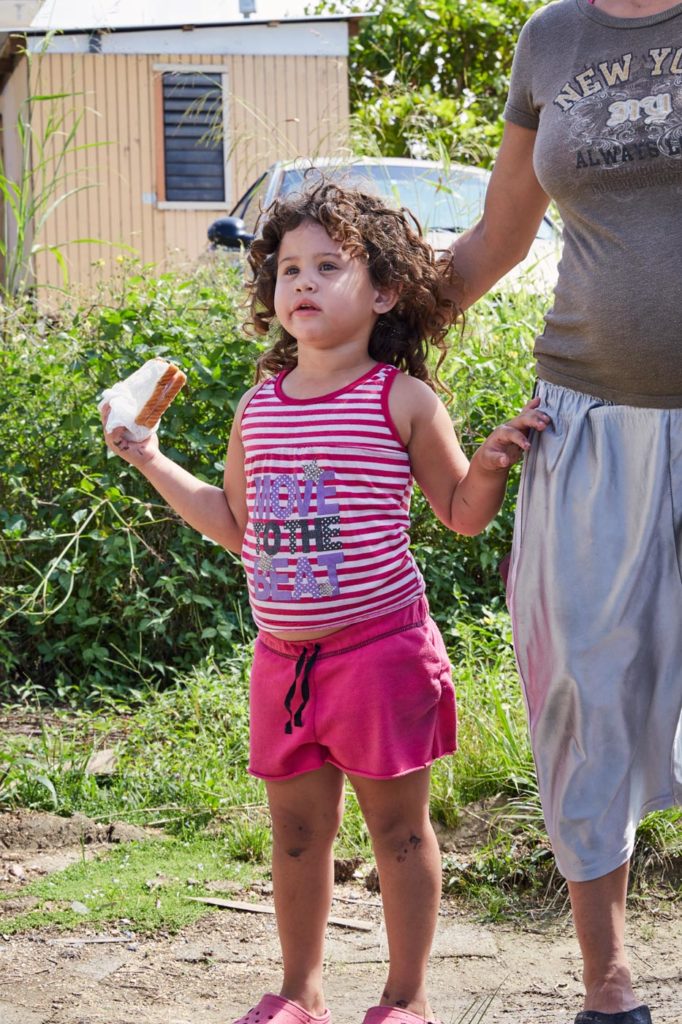
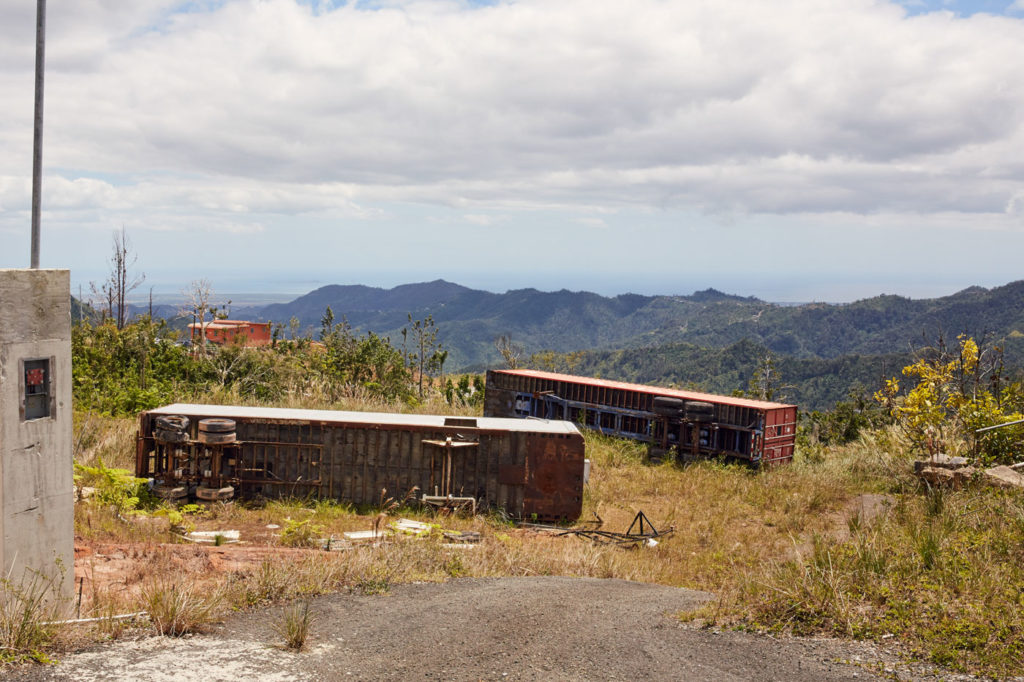
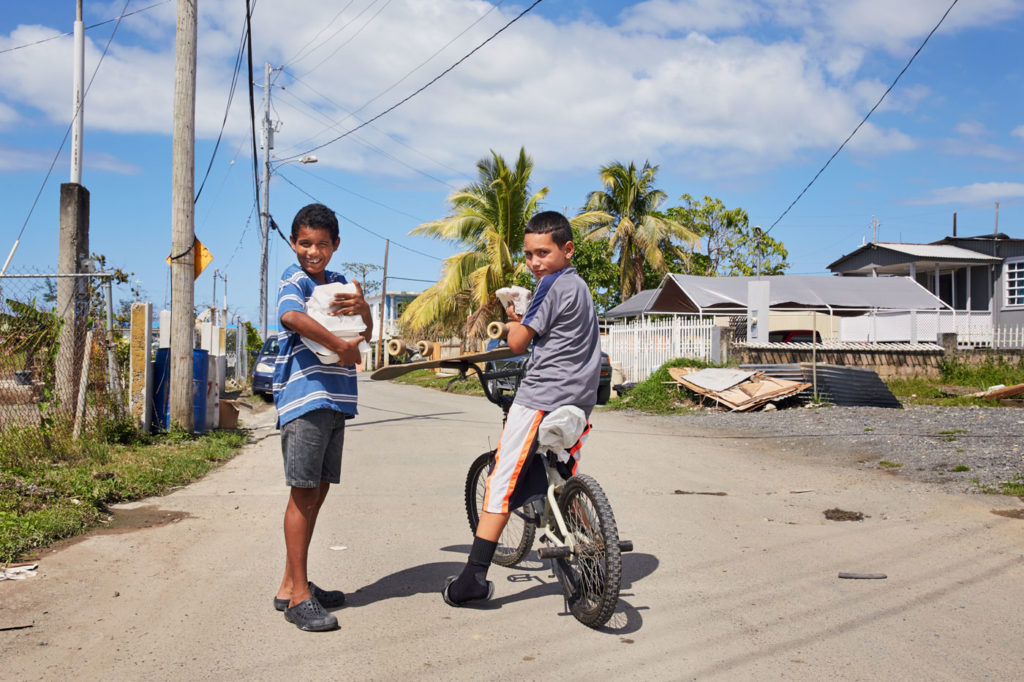
No Faith in the System
The combined struggle of weeks without power and water, infrastructure damage, decimated homes, and excessive wait times for gas, food and daily provisions caused severe distress to residents. “I don’t think I ever really processed the whole thing very well,” says Schintler. “I don’t think anybody really does. But we dealt with it in a food-and-wine way—everybody got together and ate.” Unlike other traumatic circumstances—like the loss of a loved one where grief is localized—there was suffering in all aspects of life post-Maria.
Severe damage to the island’s telecom infrastructure cut Puerto Rico off from the world for weeks. The power grid was left in shambles. It was a situation one could almost expect for a third-world nation, but not for a region of the U.S. The chronic issues with electricity on the island are still affecting thousands of citizens. The Rhodium Group, an independent research provider, used a metric of number of customers without power multiplied by the duration of the blackout. They deduced that given the scale and extent of the power outage in Puerto Rico, Hurricane Maria will hold the honors as causing the largest blackout in U.S. history to date. The Group has also predicted this will be the world’s second largest power outage in recorded history, behind Typhoon Haiyan in 2013.
The lack of faith in a broken system has been years in the making. “Even before the hurricane, we were the ‘crisis generation’ living in the economic crisis of Puerto Rico, so we didn’t expect help from the government at all. And the hurricane just crystallized that,” says Cofresi of La Factoría. “Both situations—the economic downfall and the hurricane—are not going to be easily forgotten.” With Maria taking out thousands of small businesses, the question remains how many will actually survive in the long run? “February and March are supposed to be the best two months of the year,” says Schintler of Marmalade. “I’m nowhere near last year. Not even close to it.”
Legner and Santiago’s families took rescue efforts into their own hands, including their son who started a GoFundMe page. “Have we gotten any financial help from our local or federal government? No. Nothing. Not one drop,” says Santiago. “Many of our clients—people who have been here either for our coffee tour or stayed in our casitas—donated money. This is how we’ve been able to operate, to stay alive. We’ve gone without income for six months.”
However, the government aid workers who came to Puerto Rico after the storm proved invaluable. “They were wonderful, lovely people who were so committed to helping the island—working around the clock, feeding, nurturing, saving, doing anything they could to help Puerto Ricans,” says Schintler. “They were the only good part of the process.”
The local government, suffering from a seventy billion dollar debt-crisis, can’t go it alone; Puerto Rico needs the support of the federal government. “You’re starting to see a lot of the federal agencies and non-profits pull out of Puerto Rico. A lot of the emergency response has disappeared. What happens now?” asks Schrode of World Central Kitchen. Many Puerto Ricans are still waiting on financial assistance, some even having depleted their savings in the expectation of those funds. FEMA repair grants are being rejected as residents are unable to provide land deeds for plots that have been in their families for generations. Back when a man’s word was his bond and agreements were made by handshakes, permits were not always necessary to build one’s home. “Now a period of desperation will start if we don’t pay attention and support our fellow American citizens here,” says Schrode. “One of the biggest threats to the island is the middle class leaving.”
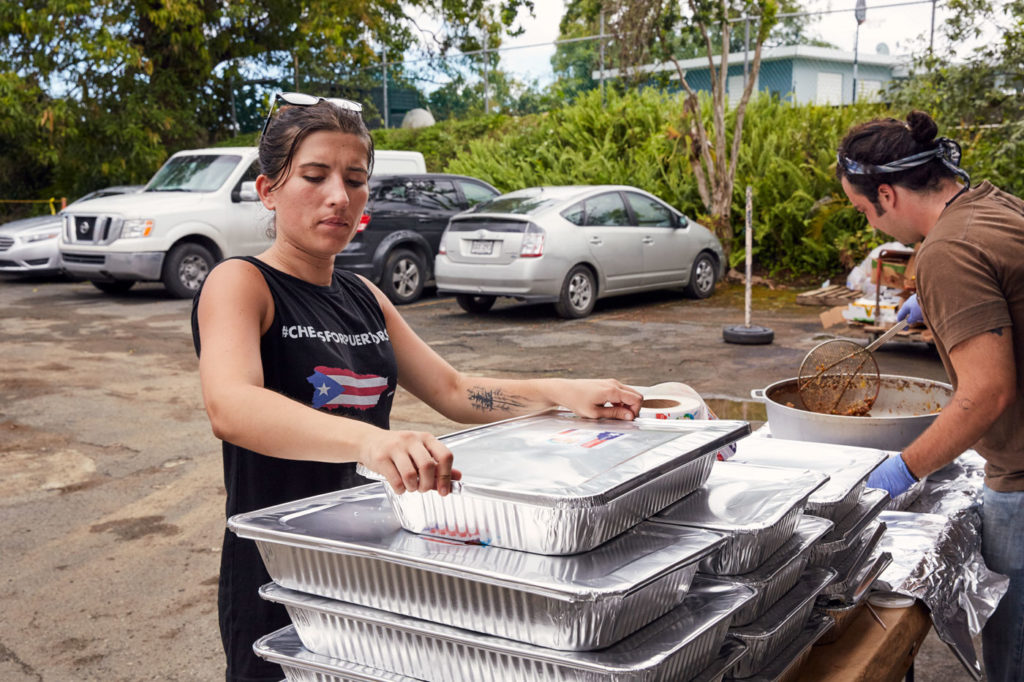
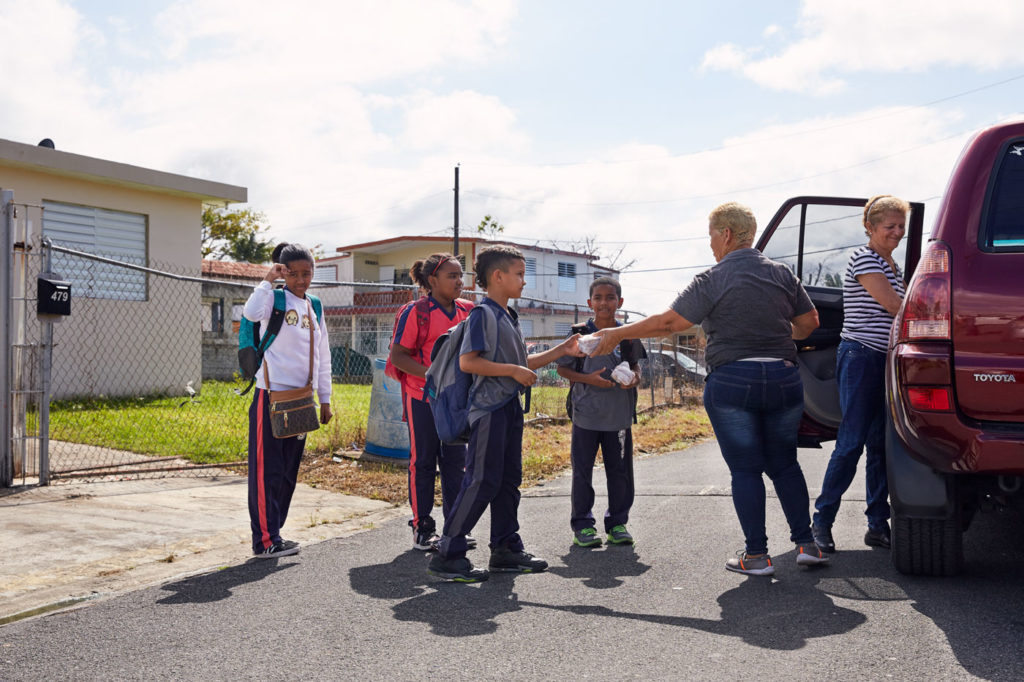
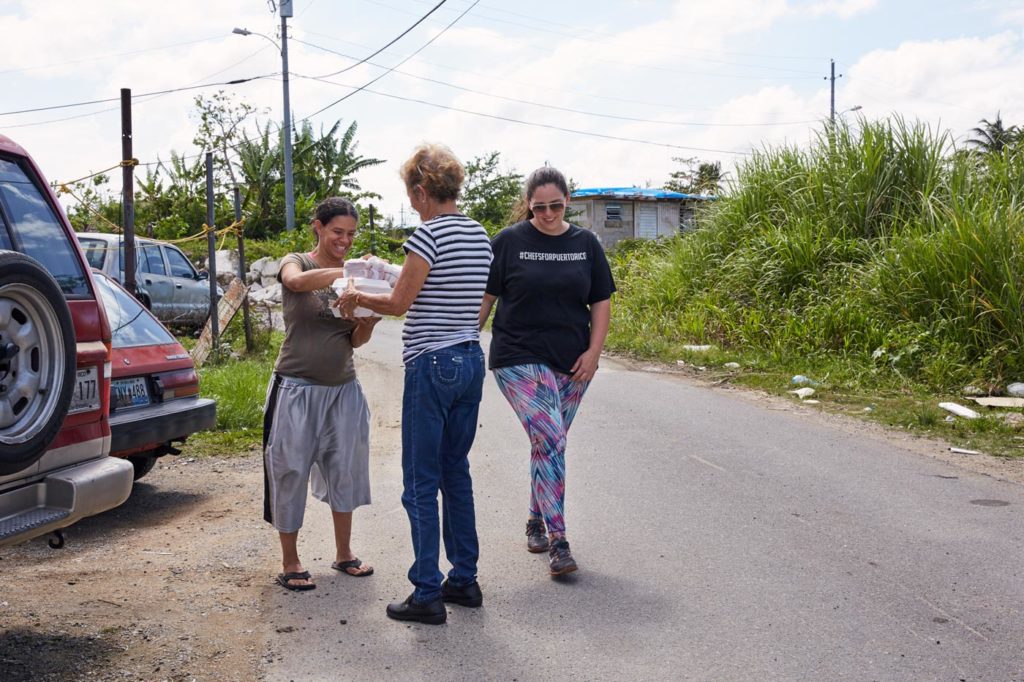
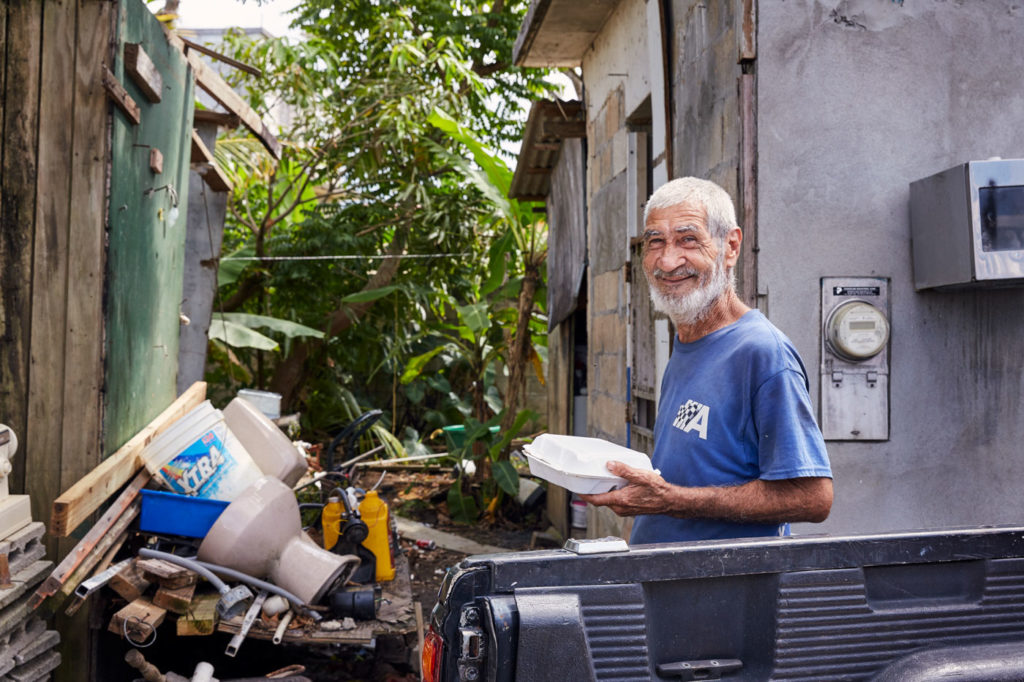
The Earth Gives Back
In January, Schrode visited various farms on the island that were beginning to reconnect with local restaurants, offering to buy whatever they had left. That helped shift meal prep from canned vegetables to fresh produce at World Central Kitchen. “It’s health, local economy, and investing in Puerto Rico and the land,” Schrode says. “And allowing these farmers to get the income they need as well.” The organization is doing a round of farm grants for the farmers who have been serving them; it’s aid that will go toward refrigeration, rainwater capture, greenhouses, and equipment. “We’ve catalogued two hundred small farms on the island; we’re working with a dozen,” she adds.
Schintler has worked with local farms to create Marmalade’s California French menu. Up to thirty farms deliver a medley of sprouts, lettuces, radishes, beets and roots to various proteins such as goat, rabbit, poultry and beef. “The produce we’ve seen since January has been fantastic,” says Schintler. “That two to three month rest—and a lot of that natural composting from bugs, animals, trees, fruits—churned everything back into the earth. God has a way of rebirthing.”
Before Maria made landfall, a farm-to-table drive was gaining momentum on the island. Post-storm, growers and chefs are feeling more emboldened to keep that alive. “There’s a conscious movement in the gastronomic community that the way to rebuild now—because it’s a clean slate—is going to be in this farm-to-table aspect,” says La Factoría’s Cofresi. “Since the hurricane, we’ve had the opportunity to collaborate with a local agricultural group, a joint venture to buy a ten-acre farm in Ciales, a very important agricultural region in Puerto Rico.” After seeing the volume produced by the grower, Cofresi knew his group wouldn’t be able to utilize all the product, so his team started a prep-kitchen to develop and source ingredients not only for his establishments, but to supply other restaurants and hotels as well. “We’re building a six-thousand-square-foot facility to take in all the produce coming from the rest of the island. This project is going to change things.”
Hernandez of Verde Mesa touts the agricultural innovation of aquaponics and vertical farming, many of which are housed inside old, unused warehouses on the island. “A lot of the farmers I work with lost their farms during the hurricane, but vertical farms were protected from the storm,” he explains. When it came time to open Verde Mesa’s doors mid-November, Hernandez depended on these growers for produce. “A lot of the menu came from those farms,” he explains. “Cost has also improved—the price point is way better than before.”
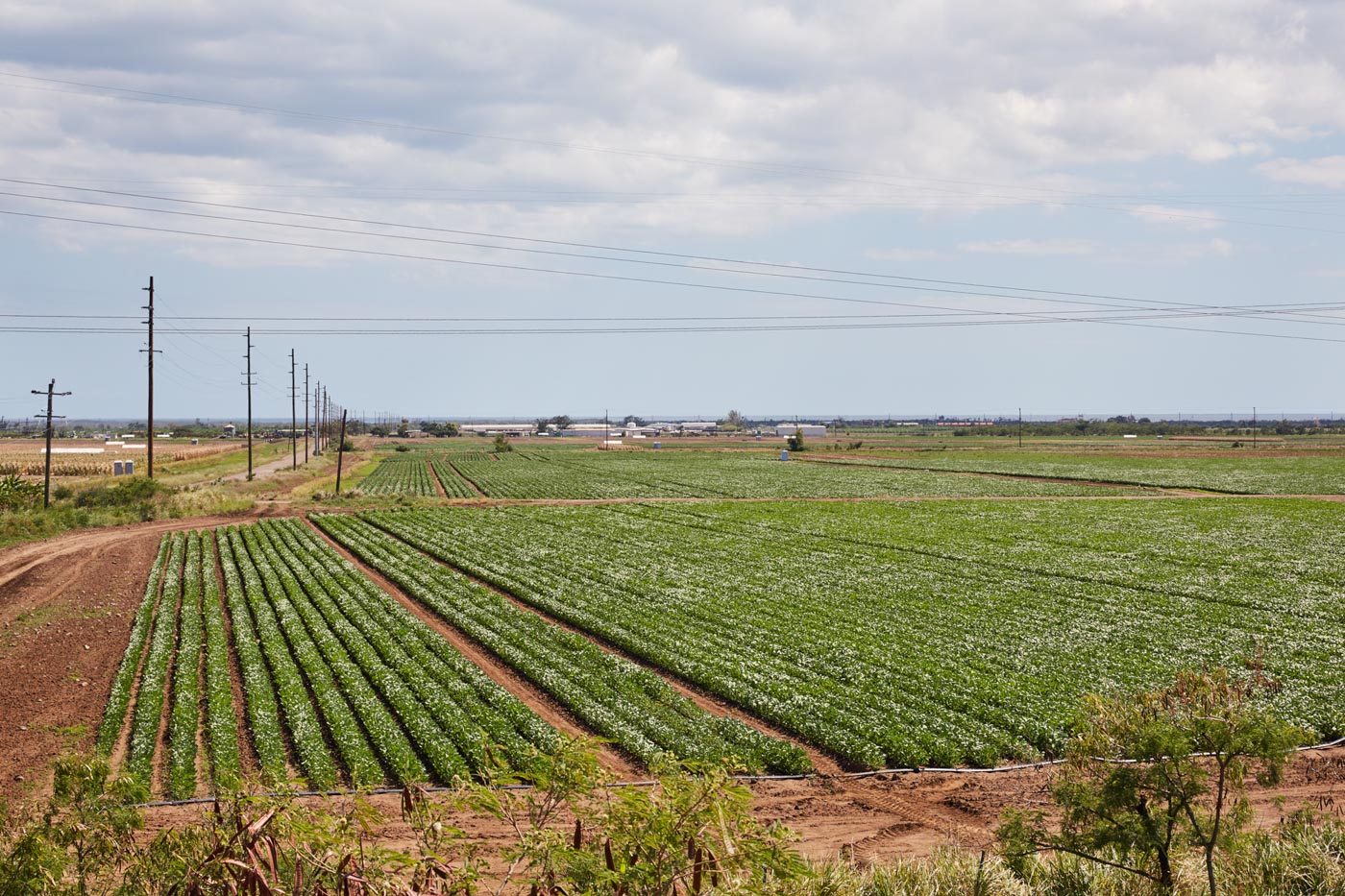
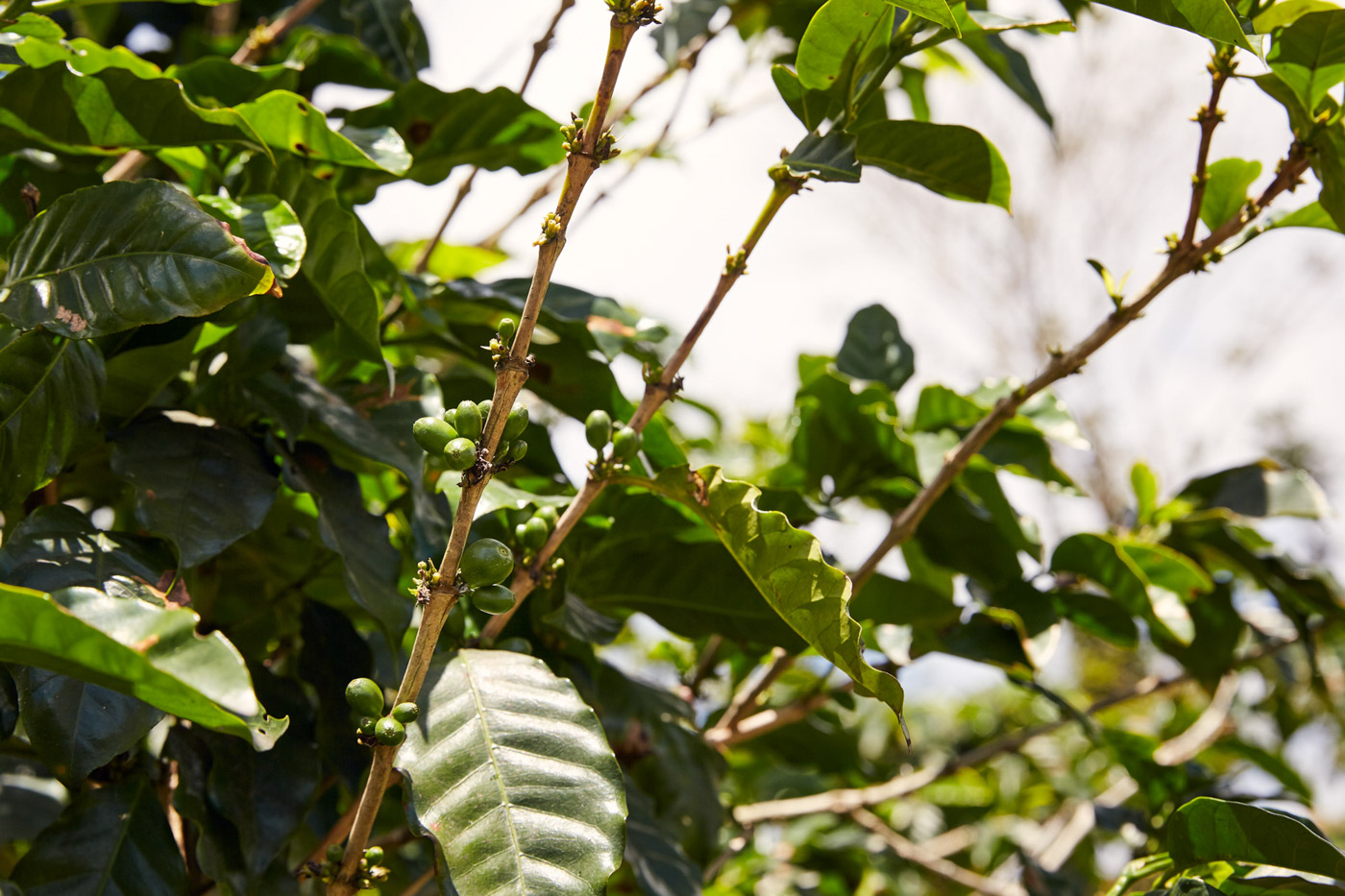
Puerto Rico Rises
The Conservation Trust of Puerto Rico—a private, non-profit organization focused on the protection of natural resources—has a reforestation plan to replant thousands of native Puerto Rican trees. These plants withstood hurricane-force winds more effectively than non-native trees. “We will be receiving more than fifty trees from the Trust to plant on our farm for our shade-growing coffee,” says Santiago. “It is private initiatives like these that are helping to move Puerto Rico forward, not the local or U.S. government.”
As of March, World Central Kitchen has dramatically scaled down its efforts since the days following Maria to under twelve thousand meals across the entire island. “We hope that number continues to shrink because that means Puerto Rico se levanta,” Schrode says optimistically. The phrase, meaning Puerto Rico rises, is seen across San Juan on banners and street art. Although the island’s road to full recovery may take years, Puerto Ricans—especially the younger crop—are in it for the long haul. “There’s a lot of pride to rebuild, but also maintain what we had before. My generation is thinking outside the box and rethinking how to do things. We were doing this before the hurricane, not just because of the hurricane,” says Cofresi. “There is a feeling of resilience—we’re not going to let this stop us.”
It seems word is spreading of Puerto Rico’s recovery. The island experienced a tourism boom over Easter and Passover weekend, including families who flocked to the island for spring break, according to the Puerto Rico Tourism Company. The government-owned corporation has made a big push this year to inform stateside citizens the island is open for business. And with record-breaking hotel occupancy numbers this spring, it seems the message is working. A hopeful sign the territory is enticing visitors once again. It is, afterall, la isla del encanto: the island of enchantment.


Our comments section is for members only.
Join today to gain exclusive access.